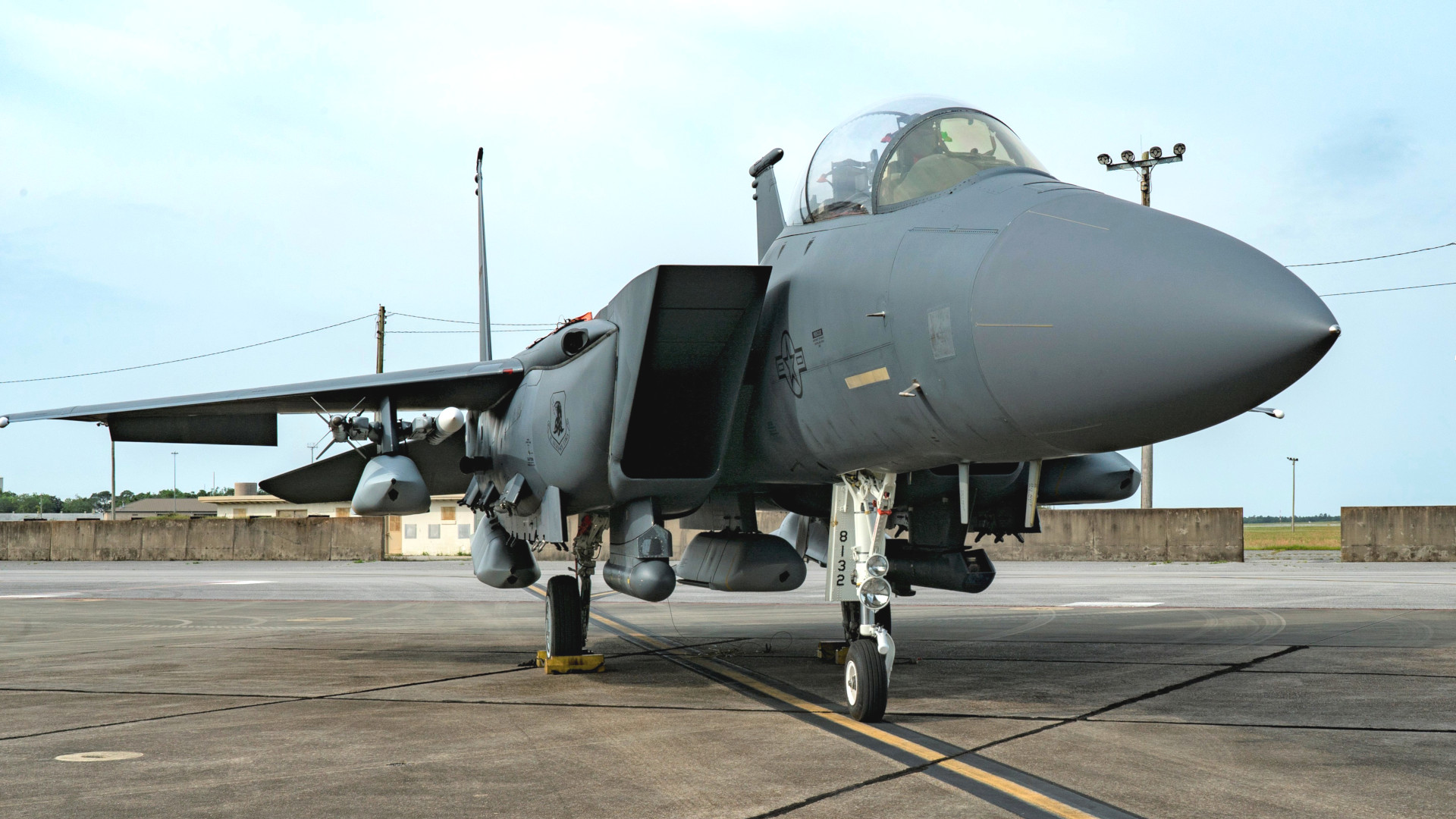The arsenals of the U.S. Air Force’s F-15E Strike Eagle and F-15EX Eagle II combat jets look set to grow with the addition of stealthy AGM-158C Long-Range Anti-Ship Missiles (LRASMs). F-15Es and EXs armed with LRASMs would give the Air Force a major boost in its ability to engage enemy warships, which could be particularly valuable in any future high-end fight in the Pacific against China.
The U.S. Navy’s Naval Air Systems Command (NAVAIR) announced its intention to negotiate a sole-source contract with Lockheed Martin, the prime contractor for LRASM, to integrate the C-1 variant of the missile onto the F-15E and EX earlier today. The Navy manages the LRASM program on the U.S. military side. The AGM-158C-1 is the main subvariant of the LRASM in production now. An extended-range version of the missile, the AGM-158C-3, able to fly roughly twice as far (around 600 miles versus 200-300 miles based on available information), which will also feature other improvements, is now in development.

Navy F/A-18E/F Super Hornets and Air Force B-1 bombers are the two available launch platforms for LRASM now. Work is already underway to integrate the missiles onto the Navy’s P-8 Poseidon maritime patrol plane and at least some variants of the stealthy F-35 Joint Strike Fighter.
Integrating the AGM-158C now onto Air Force F-15E and EX makes good sense. The Strike Eagle and other F-15 variants in that extended family can employ non-stealthy and far shorter-ranged Harpoon anti-ship missiles, but it’s unclear if the Air Force has those weapons available for F-15E units now and/or if they actively train to employ them. The Air Force’s Strike Eagles are already a platform of choice for employing members of the AGM-158 Joint Air-to-Surface Standoff Missile (JASSM) family on air-launched land-attack cruise missiles from which the LRASM was derived. The EX has demonstrated its ability to employ JASSMs, as well.

The large overall payload capacity of the Strike Eagle and the Eagle II should also allow a single one of either of the jets to carry a significant number of AGM-158C at once. The Air Force has test-loaded five JASSMs, which have the same external form factor as the LRASM, onto a single F-15E in the past.

Just last year, Lockheed Martin, in cooperation with the Navy, conducted what appeared to be a first-of-its-kind test that saw four LRASMs fly simultaneously. TWZ noted at the time that this was representative of how the missiles would actually be employed in combat. A single F-15E or EX could well be able to unleash a volley like this at one or multiple maritime targets.
LRASMs already offer a high degree of survivability thanks to their stealth design and highly autonomous route-planning capability tied to an onboard electronic support measures (ESM) suite. The missiles can automatically change course in response to the sudden appearance of enemy defenses, as well as better detect their targets via their radio-frequency emissions. In addition, they use a passive imaging infrared sensor in the terminal phase of flight, which does not send out radio-frequency signals that an enemy could detect and is immune to radio-frequency jamming. It can also visually decipher different targets by comparing them to its onboard database and strike them in the most vulnerable spots.
An onboard datalink also means AGM-158Cs can receive additional threat updates from offboard sources as they head toward their targets, as well as work cooperatively with other LRASMs for more coordinated strikes.

F-15Es and F-15EXs, which also have significant combat range thanks in part to conformal fuel tanks and large internal fuel load, armed with LRASM would also increase the U.S. military’s overall capacity to launch aerial anti-ship strikes across large swathes of a future battlespace. This could be particularly important in a future major conflict in the Pacific with China’s People’s Liberation Army (PLA), which continues to add larger and otherwise more modern surface warships to its already substantial combat fleets.
Launch capacity is only one part of the equation and there are growing concerns about the adequacy of American stockpiles of stand-off munitions like the AGM-158C and the ability to replenish them during a sustained fight. LRASM is one of a number of weapons the U.S. military is looking to buy significantly more of going forward and Lockheed Martin is taking steps to ramp up production.
In addition, expanding the arsenals of the F-15E and EX can only re-raise questions about the Air Force’s desire to slash the Strike Eagle fleet and truncate purchases of new Eagle IIs. TWZ has previously explored in depth how the current expected F-15EX fleet size is too small to allow commanders to get the most out of the added capabilities the jets have to offer. The Air Force currently expects to use the Eagle II primarily for air-to-air combat missions, but the groundwork is already being laid to add air-to-ground to the portfolio of units equipped with the jets. Other missions, like launching specialized outsized weapons and controlling drones, are also being examined.

Exactly what the estimated timeline is for the integration of the AGM-158C-1 onto the F-15E and EX is also unclear and will depend in part on when the contract with Lockheed Martin is finalized. Still, a major boost to the anti-ship capabilities of the Strike Eagle and Eagle II is now on the horizon.
Contact the author: joe@twz.com
